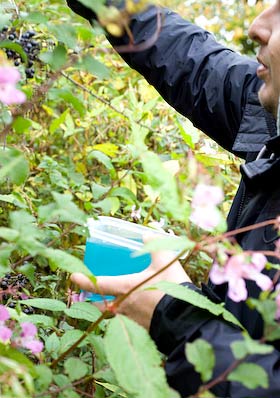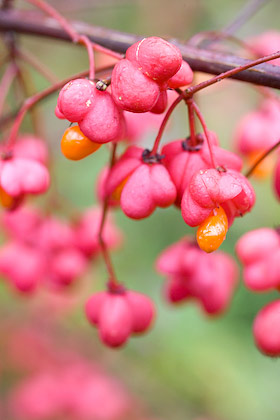
The move from London, to live here full time, meant giving up the allotment that I’d shared with my bezzie-mate Joy. I wouldn’t exactly say that we made a brilliant job of tending the allotment over the few years we endeavoured to grow things, but the Dulwich site has an amazing aspect which meant it worked brilliantly for us on a social level. On sunny Sunday mornings we’d sit on our make-do bodge-job bench, drink coffee from a flask, eat croissants and read the papers, whilst looking out over the London cityscape that glistened before us, the London Eye glimmering like a fabulous eternity ring in the distance. We’d have a chat, do a bit of digging, and do some more chatting. As our plot was just about the farthest away from the car park it could possibly be, every visit consisted of dragging the contents of a salvage yard; wooden pallets, heavy rolls of old carpet, bags of woodchip and old scaffolding planks, up the sloping path, which on arrival at the plot then called for a good sit down.

The challenge to feed the soil and make it more workable and fertile was a perpetual one. The soil was pretty rubbish, hard as a rock with London clay as the underlying major ingredient. When I was feeling particularly enthusiastic, I would invest in massive bags of manure compost, which needed dragging up the hill and which on application appeared to be akin to ‘pissing in the ocean’. We’d bring our organic rubbish for composting and wobble precariously up the hill pushing heaped up high barrowfuls of horse manure. I made a waterbutt into a stinking comfrey liquid manure container.
I must say, I haven’t got much of a recollection of a result. Even though we were once featured in the Independent, I can’t actually remember making a whole meal using freshly gathered produce from our plot. The word ‘glut’ was more of an exotic fantasy than something to send us running for the hills. So when I came to live here it seemed perfectly necessary to find myself an allotment.

Round here there hasn’t been much call for allotments. The council got rid of any they had at the end of the second world war, presumably used the land for other things or sold them off. When I tracked down the Parish council to find out if there were any up for grabs I became the waiting list of one and eventually, 3 years later, an allotment has materialised. In that time allotments have become much more fashionable, people have become much more poor and the waiting list has grown to eight.
So I am thrilled to be taking over the cultivation of this plot. The plan is to plant especially with preserving and jam making in mind, so there will be an abundance of fruit bushes and as the site is bounded on two sides by a 5ft high stone wall, I will be able to train fruit trees against it. I’m planning to grow a whole bed of hardneck garlic just for the scapes (the curling flower stems) which are a delicacy for pickling. Today has been a beautiful sunny autumnal day and also my day off, so I went up there to get started. The soil has been rotivated on a regular basis over several years so is light and aerated, a joy to dig and as far removed as you can imagine from that rock hard London clay. I used some old wooden tent pegs and twine to make lines to divide up the site into manageable rectangular beds and it is already starting to look the part. The task is ongoing but I’m dreaming about what to plant. I go to sleep counting rhubarb crowns and angelica seedlings.











